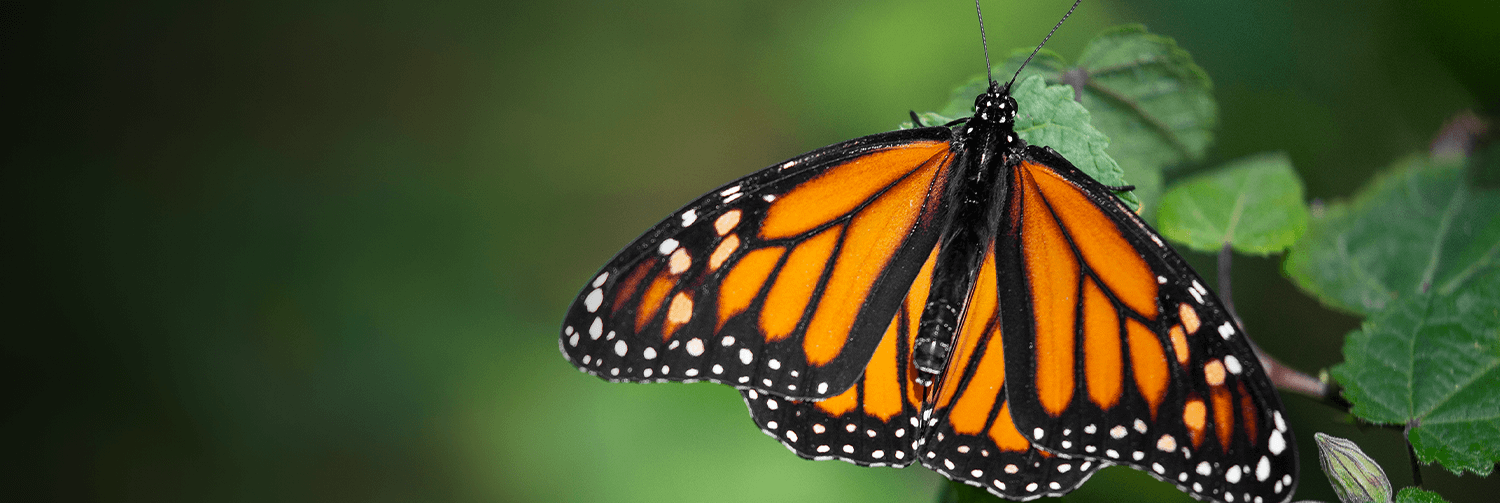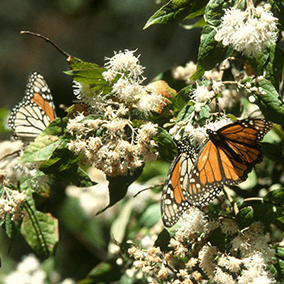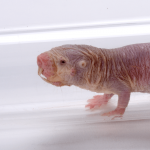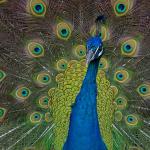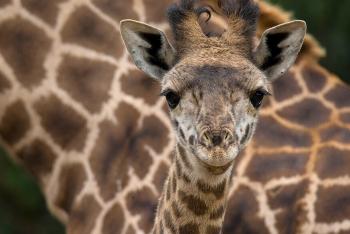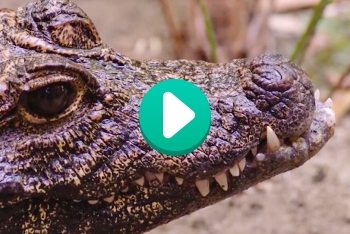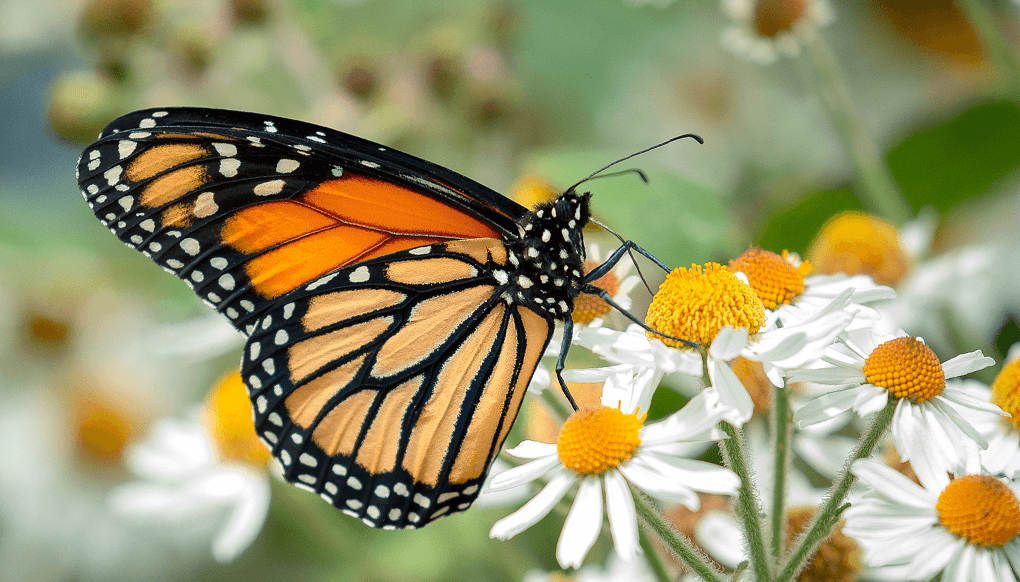
Monarch butterfly
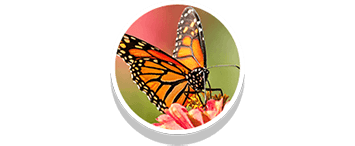
Arthropods


Some Threatened
facts


Monarch caterpillars only eat milkweed. Butterflies feed on nectar from flowering plants.

Monarchs live wherever milkweed grows, including prairies, wetlands, and gardens. They are native to North and South America, but have been introduced to other places like the South Pacific and some parts of Europe.
description
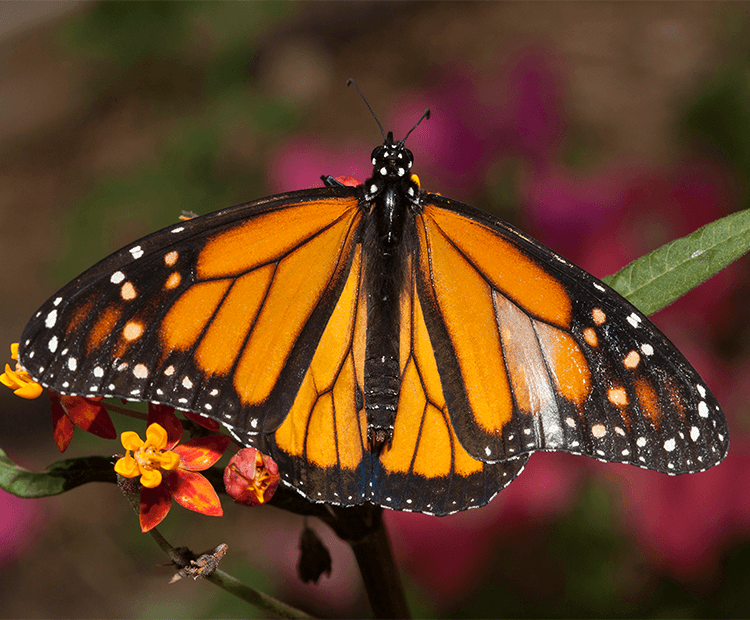
Coast to coast
North American monarch butterflies can be separated into two groups. Eastern monarchs travel between Canada and the Great Plains, and Central Mexico. Western monarchs range through Arizona, Utah, Washington, Oregon, and Baja California, Mexico. Many people in the United States have spotted a monarch, no matter which part of the country they live in!
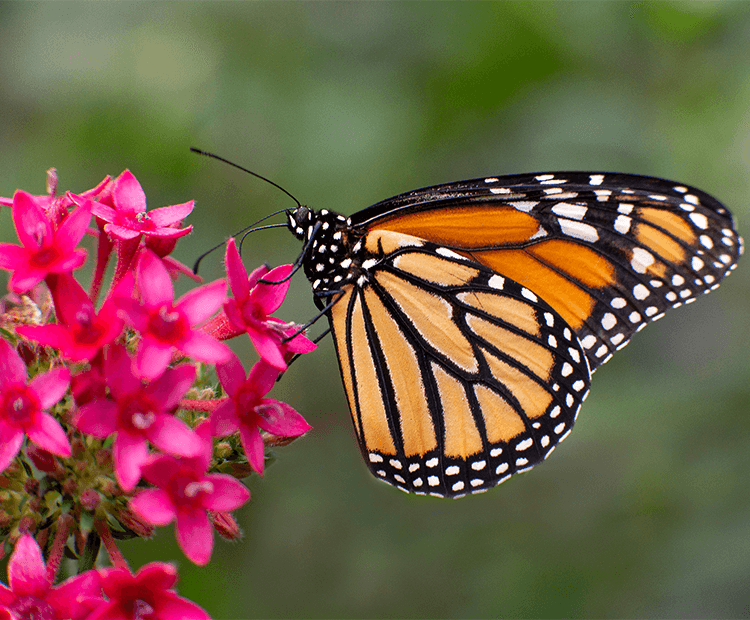
Pollinator power
Monarchs are more than just a pretty sight. They play an important role in keeping our planet healthy. Monarchs spread pollen as they flutter from flower to flower, feeding on nectar. Without monarchs, other butterflies, and more pollinators like bees and bats, many flowering and fruiting plants would lose their ability to reproduce.
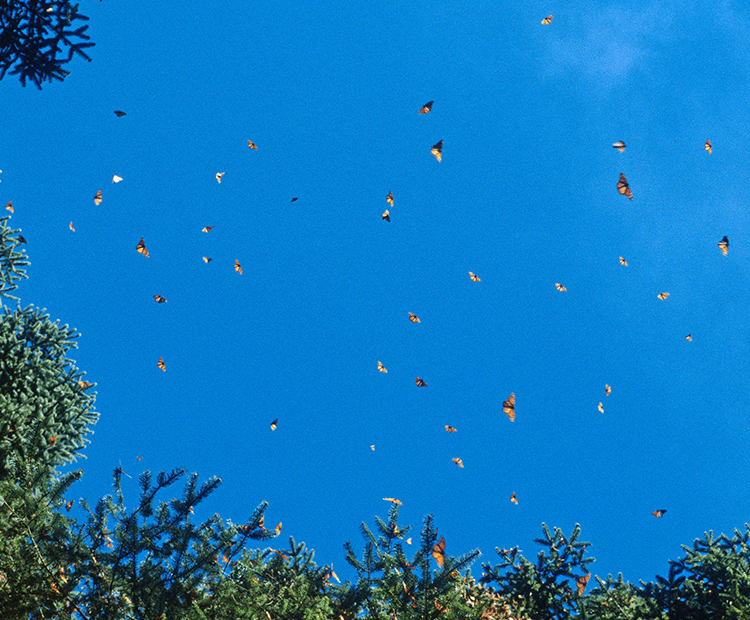
Ultimate road trip
Monarchs are famous for their massive yearly migration. When the weather turns cold, these butterflies travel thousands of miles from Canada and the northern United States to warmer temperatures in California and Mexico. Their international journey is still a scientific mystery: people are not sure how monarchs know which way to fly, since they only make the trip once in their short life span.
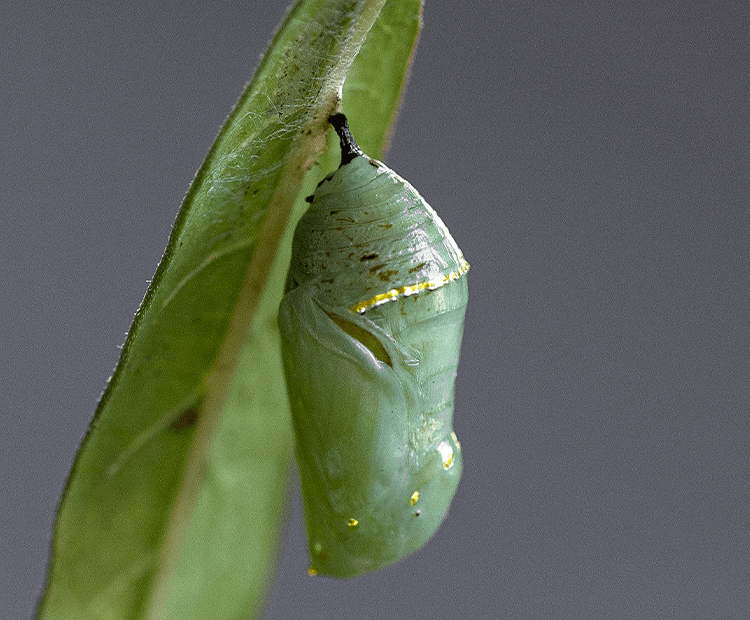
Just like magic
Like other butterflies and moths, monarchs change shape as they grow into winged wonders. This process, or metamorphosis, has four steps: egg, caterpillar, pupa, and adult. Part of this transformation occurs inside a hard casing called a chrysalis. After 10 to 15 days, the chrysalis breaks open and a butterfly emerges.
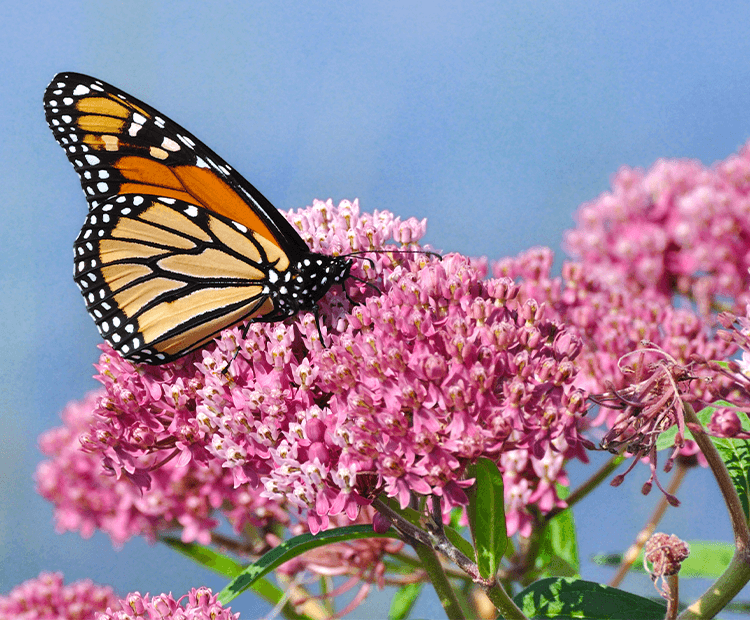
Meals for monarchs
As cities and farms grow, butterflies lose their food and habitat. San Diego Zoo Wildlife Alliance scientists lead efforts to protect and raise awareness about monarchs. You can join us by planting native milkweed, feeding monarchs for their long journey. It’s important to research and choose a milkweed species that grows naturally near your home. Otherwise, monarchs may not complete their migration—a unique and fragile piece of North America’s natural history.

